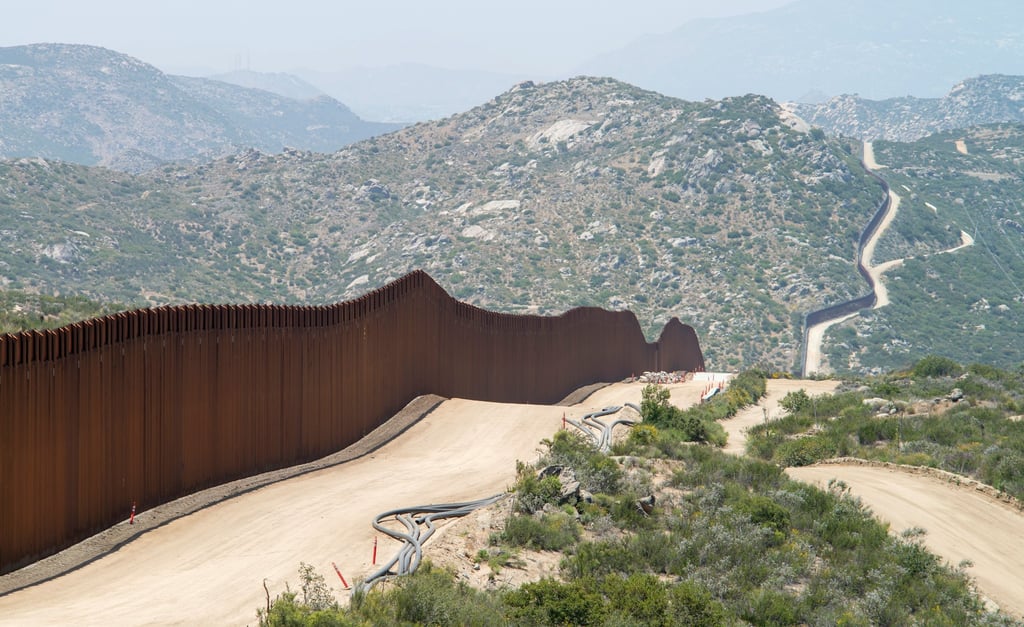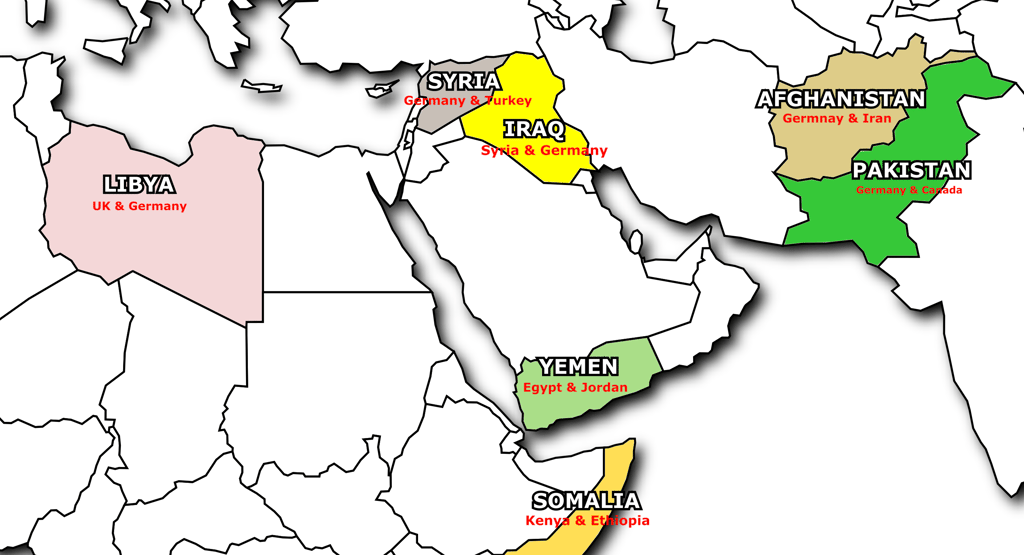Who's To Blame?
The root causes of immigration
6/17/20244 мин чтение


Introduction
Most people living in the West have had a pretty comfortable existence for a relatively long time. Continental USA was spared the devastation of WW2 and, since then, has been largely able to select which wars it participates in. The much dreaded nuclear annihilation of the Cold War failed to materialise, and the collapse of the Soviet Union even managed to give most westerners a sense that the world was about to head in a positive direction, away from war and the threat of destruction.
By 2024, this feeling has vaporised. Nuclear war is again a talking point and lines are being drawn across Ukraine and the Straits of Taiwan. Instead of easing up, conflict in the Middle East appears to be spiralling out of control while everyone in the Western world is apparently being forced to pick sides. In the UK, the PM announced that he would be supporting military national service for 18-24 year olds and lawmakers in the USA just passed a bill setting up the legal framework for conscription.
2024 is also the year of global elections, and so far, the swing in Europe appears to be to the right. This can be attributed largely to the increasing concern about the rise in immigration, and the fear of a steady erosion of national culture.
Immigration has been a favoured scapegoat of politicians for centuries. It's always been easy to blame foreigners as the cause of a country's problems and to gather voters behind the flag of national identity. Very few politicians however, appear to address the root cause of immigration. Fewer still will admit that it is a direct effect of their foreign policies (both economic and military), mainly because these actions are ongoing.
Post WW2 trends in immigration
In the aftermath of World War 2, the geopolitical landscape of Africa and the Middle East underwent profound transformations, sparking significant migrations. The decolonisation of Africa, beginning in the late 1940s and continuing into the 1960s, played a pivotal role in reshaping the continent's socio-political environment. As European powers relinquished control, newly independent nations grappled with internal strife, economic instability, and burgeoning nationalist movements, prompting waves of emigration.
Armed conflicts in the Middle-East, Largely beginning with the 1948 Arab-Israeli War, marked another critical juncture, resulting in the displacement of approximately 700,000 Palestinian Arabs. This event triggered a series of migrations throughout the Middle East, as individuals sought refuge from escalating hostilities. Subsequent conflicts, such as the Six-Day War in 1967 and the Lebanese Civil War from 1975 to 1990, further exacerbated the region's instability, contributing to additional refugee flows.
In Africa, civil wars and ethnic conflicts, such as those in Nigeria, Sudan, and Rwanda, forced millions to flee their homes. The Nigerian Civil War (1967-1970) alone displaced over two million people, while the Rwandan Genocide in 1994 resulted in another two million refugees. These upheavals, coupled with economic hardships, fuelled continuous emigration from the continent.
Statistics from the United Nations High Commissioner for Refugees (UNHCR) indicate that the number of annual immigrants in Europe tripled from the 1960s to the 1980s. Similarly, the United States saw a significant influx of Middle Eastern refugees, particularly following the Iranian Revolution in 1979 and the Gulf War in 1990-1991. The US-led War on Terror following 9/11 displaced over 38 million people. The majority (68%) of these were taken in by neighbouring countries but many refugees managed to reach Europe and North America.
Western countries' immigration policies evolved in response to these demographic shifts. Initially, policies were relatively open, driven by labor shortages and the need for reconstruction post-WWII. However, by the 1980s, economic recessions and rising xenophobia prompted stricter immigration controls. Countries like the United Kingdom and France both attempted more rigorous asylum procedures, reflecting a growing ambivalence towards new immigrants.
Refugees from Samawah, Iraq
in an Iranian refugee camp.
Pic by Jonathan Ramalho
Factors Driving Migration in the 21st Century
In the 21st century, immigration from Africa and the Middle East has increased again, significantly influenced by a combination of ongoing conflicts and economic instability. These elements have collectively driven substantial migration flows, reshaping demographic landscapes across Europe, North America, and beyond.
War, as always, causes mass migration. The Syrian Civil War, which the USA fuelled with over one billion years in military aid annually, has led to the displacement of over 6.6 million Syrians, with a significant number seeking asylum in Germany, Sweden, and Canada.
Economic instability remains a driving force behind migration. Many individuals from countries in Africa such as Nigeria and Sudan migrate in search of better economic opportunities. The International Organisation for Migration (IOM) notes a continual increase in economic migrants seeking employment in more stable economies. Remittances from the diaspora have become a crucial economic lifeline for families back home, and many families left behind in the countries of origin depend on those who emigrated.
Other factors, Droughts and desertification are displacing people in regions like the Sahel of Africa and coastal areas of the Middle East. A report by the World Bank suggests that by 2050, climate change alone could force an additional 140 million people to migrate within sub-Saharan Africa, South Asia, and Latin America.


The Mexico/USA border wall in California
Photo by Greg Bulla on Unsplash


Map showing countries bombed by the West post 9/11 and common final destinations of the displaced
Could Investment in Origin Countries Have Prevented Mass Migration?
Foreign aid, when effectively administered, can foster economic stability and reduce migration.
The War on Terror killed over 4.5 million people and according to the Watson Institute for International and Public Affairs, cost over $8 trillion. That's an eight, followed by twelve zeroes.
The cost of treating US veterans alone over the next 30 years is expected to cost an additional $2.2 trillion.
Many internationally recognised academics view the entire operation as an unmitigated disaster: millions dead, millions more displaced, ongoing trauma, increased global destabilisation and the alienation of the West by muslim countries who view the war as a brutal imperialist project. In many ways, the true costs are yet to be revealed. It appears that the West would be in a better current position if we had simply thrown $8 trillion into the fireplace.


